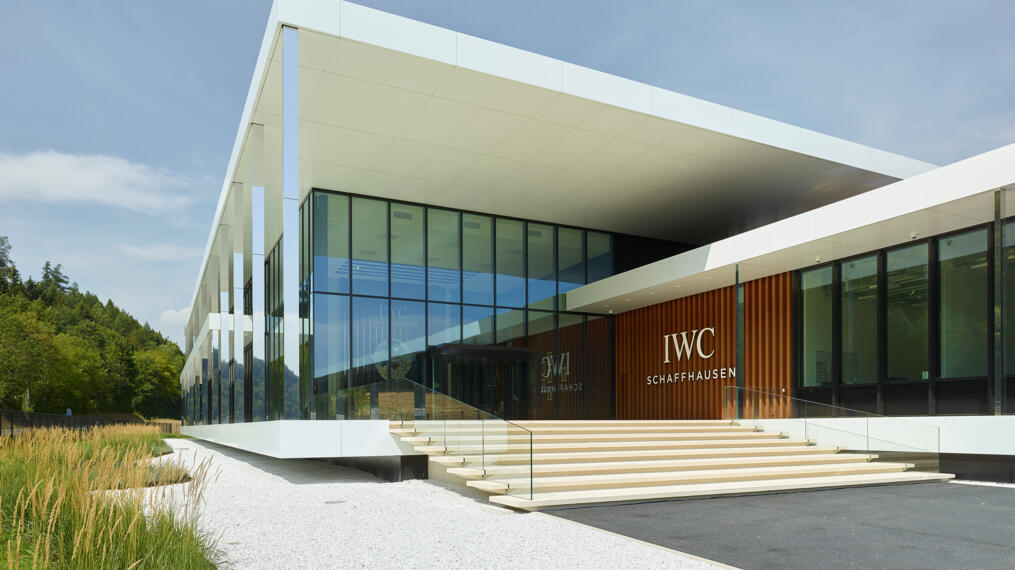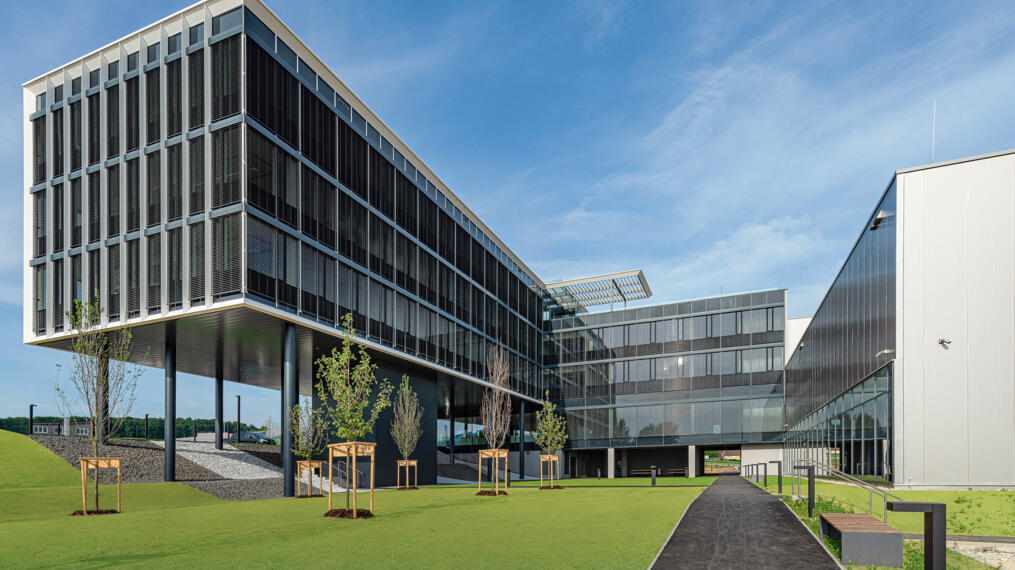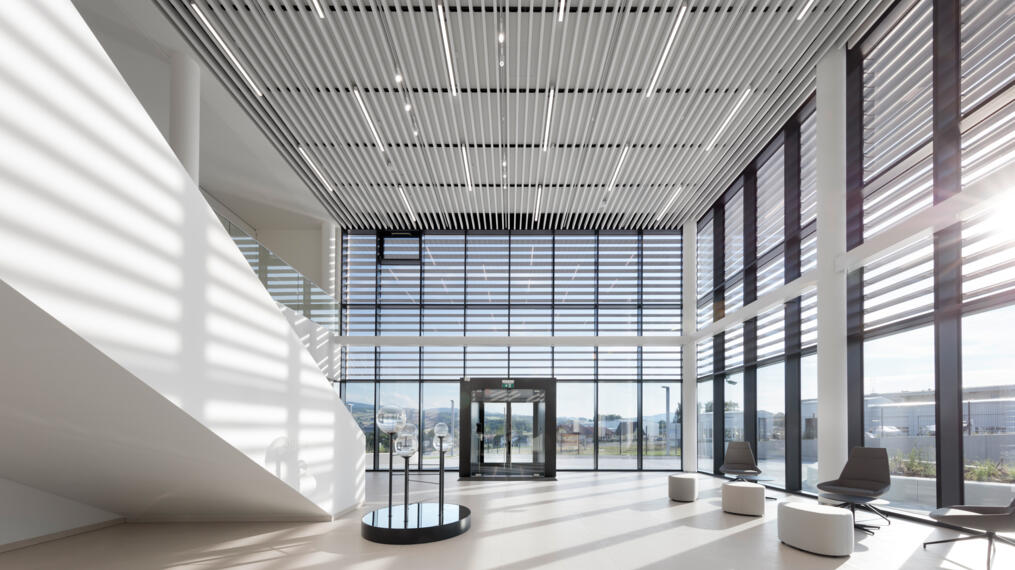Mr Achammer, why did you become an architect?
Because I had the feeling that I could make a positive change in the world with this work.
Was there a particular highlight in your career?
One of the flagship projects for ATP architekten ingenieure and also for me personally was the first semiconductor factory for Siemens, now Infineon, at the Dresden site, which was planned and built in just under 15 months. That was in my early years as an architect.
ATP was founded in Innsbruck in 1951, the same decade as HELLA. What makes ATP a Tyrolean success story?
I believe it's primarily the roots of our family. ATP has become successful outside Tyrol in my father's generation and in my generation. We are an extended family business; and as such, we are not just financially driven, but also value-driven. I think this is an important aspect of our success.
You worked at the Vienna University of Technology (TU). What motivated you to also get involved in research and teaching?
I was a professor of integral planning and industrial construction at the Vienna University of Technology for 20 years. The institute was a natural fit for me. That’s because here I was able to pass on the expertise, which I believe I have mastered best. I have always wished to give back to society some of the happiness that I have experienced in my professional life. The appointment at the University of Technology was a particularly wonderful opportunity to do this.
So has this wish come true?
It has been absolutely fulfilled and not just concerning myself. It wasn’t just about giving, but also receiving from an incredibly enriching exchange with almost two generations of students whom I was able to mentor.How important are aesthetics in industrial construction?
Industrial construction is seldom a landmark in a landscape and it’s not even supposed to be one. Anyway, I think that architecture should only be like that in very exceptional cases. A building must be capable of much more. On the one hand, it must be beautiful and functional; however, it must also produce a maximum result with a minimum of material input. That's what we call sustainability today.
Together with ATP and HELLA, they are cooperation partners of the dual study course “Smart Building Technologies”. Why is this new form of training a step in the right direction?
It is a contribution towards a holistic approach to the planning of a building. If you want building technology to be integrated by a team of architects and construction engineers right from the planning stage, then you have to cultivate this discipline accordingly. This is especially true in architectural education, as architects are supposed to lead the overall planning process. But not in a way that first a house is designed, and then the specialist engineers, the construction engineers and the building services planners arrive and their results are sometimes “forced” into the planned house. This must be seen as a joint task from the outset and discussed at an equal level around a table – in other words, designed together.
You have set up a BIM competence centre. How much of your work will depend on digitisation in the future?
If we take a critical look at how much of our planning process consists of comparing different solutions and selecting the best one from among these, then up to 40 per cent of our work will be done by artificial intelligence (AI) in the future. The creative process, that is the design process, will continue to be done by humans. The profession of an architect is not threatened by AI. On the contrary, it is supported by AI, and is therefore even more beautiful.
Although it would make sense to end the separation of planning and execution, we are still a long way from achieving this. What should happen for this to change?
The private sector always leads the way here. Our private builders understand that we incorporate concrete products into our planning at a relatively early stage. When over 90 per cent of all products are procured via wholesalers because we were sleeping through the one and a half years from the planning stage to delivery to the construction site, then we are always at the mercy of the price. The public sector, with its procurement laws, is still a long way from becoming faster; that's where we need to start.



Tighter cost-efficient conditions can lead to more innovative solutions. So, are we in an innovative phase of architecture?
Yes, we are right in the middle of it, because the pressure is from all sides. Today, we are producing living spaces at prices that no one can afford any more. We could change that by bringing the processes of the 19th century, along which we are still designing and building houses today, into the 21st century. Entire parts of the process chain are eliminated this way. I can also give examples of two other major areas that could be avoided with more precise planning. The first keyword is material: Delivered material must be installed down to the last screw. That’s because if things are ordered at the construction site that nobody needs, not only do they have to be paid for, but also disposed of, which again costs money. The second example is: Many construction defects are caused by incorrect processes or incorrect timing. Fixing these is always expensive.
How important do you think is sun protection? Is it already a standard of modern building?
There’s a lot of room for improvement; right from the building configuration itself to the technologies that are used correctly. Some people do believe that coated glasses could replace sun protection. I think that's nonsense. This goes against the basic rules of physics. The sun is an inexhaustible source of energy. That's why we don't have an energy problem, just a technology problem. The best thing about the sun is that it produces heat. We must utilise this and respond with appropriate structural solutions.
How do you resolve privacy protection, heat protection and sun protection in your home?
In the only sensible way: with external sun protection.
Do you have any other message for us?
Yes, that HELLA is an extremely innovative company and is on the right track. And that through building solutions you should continue on the path of making the world a little better. This is also our vision at ATP.
